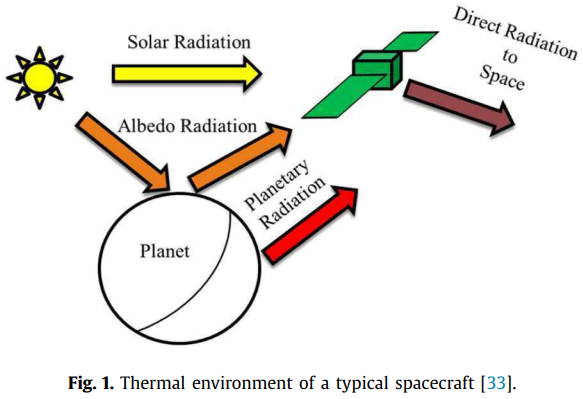TAGGED: ansys-thermal, steady-state-thermal
-
-
February 12, 2024 at 8:38 am
Ilaria Salerno
SubscriberHello,
I'm a beginner and I'm working on a university project where I need to perform a thermal analysis on a simplified satellite model. When I set up the radiative heat transfer, the software asks me to set the emissivity coefficient and the ambient temperature. I've conducted several simulations with different ambient temperature values and noticed that it significantly affects the temperature of the satellite. Since it's LEO, I kept it within a range of -100 to +60 (°C), instead of setting it to 0 K. Do you think this approach is correct, or is there a way to convey to ANSYS that I'm in a vacuum and thus don't want to consider the ambient temperature?Thank you for your help.
-
February 12, 2024 at 9:37 am
peteroznewman
SubscriberRadiative Heat Transfer works the same whether you are in a vacuum or not. The ambient temperature in Radiative Heat Transfer refers to the space around an object. That space could be the walls of a room or it could be the vacuum of dark space.
Convective Heat Transfer also uses the term ambient temperature, but that refers to fluid motion that brings in new fluid at ambient temperature into contact with the object then the heat is carried away by the warmed fluid. You can’t do that in a vacuum.
Here is an article I found.
-
February 12, 2024 at 12:18 pm
Ilaria Salerno
SubscriberThank you for your answer, Peter. My issue is that I'm unsure about the ambient temperature that I should set when simulating the radiative heat transfer from the satellite's external surfaces to the space, which is a required input besides the emissivity coefficient. Many suggest to set it to 2.7K, which is the estimated temperature of deep space, but I found that the steady-state solution drops in a not-realistic way (considering that I have also other thermal inputs, such as the solar direct radiation). Do you have any advice?
-
February 13, 2024 at 2:02 am
-
February 27, 2024 at 4:08 am
l_srf
SubscriberHi Ilaria, would you mind sharing how you created a vacuum environment for your satellite? I have a similar case to simulate (satellite in a vacuum chamber and in space) and don't know how to set up a vacuum (i.e no air) in Ansys Fluent. Thanks
-
February 27, 2024 at 8:52 am
Ilaria Salerno
SubscriberHi Laryssa. In the end, I set up the ambient temperature at 2.4 K assuming that the satellite radiates in cold space. I don't know if that's the right solution, but from my understanding, Ansys Mechanical doesn't automatically simulate the presence of air or any other gas unless you incorporate it into your analysis. I'm not sure how that works for Fluent.
-
-
- The topic ‘Question about radiation heat in ANSYS mechanical.’ is closed to new replies.


- The legend values are not changing.
- LPBF Simulation of dissimilar materials in ANSYS mechanical (Thermal Transient)
- Convergence error in modal analysis
- APDL, memory, solid
- How to model a bimodular material in Mechanical
- Meaning of the error
- Simulate a fan on the end of shaft
- Real Life Example of a non-symmetric eigenvalue problem
- Nonlinear load cases combinations
- How can the results of Pressures and Motions for all elements be obtained?

-
4167
-
1487
-
1318
-
1171
-
1021

© 2025 Copyright ANSYS, Inc. All rights reserved.








